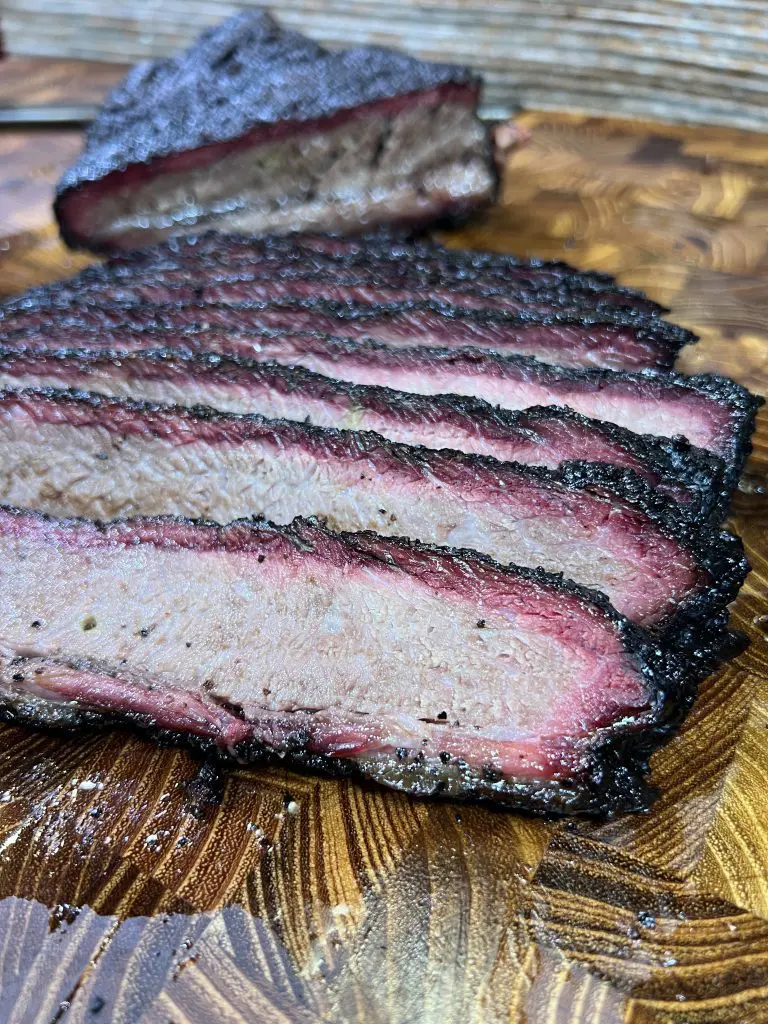This page may contain affiliate links, in which I get a commission for recommending a product to you.
Table of Contents
Barbecue is one of, if not my favorite food ever! Let’s solve the mystery of cooking pulled pork vs. brisket for whatever occasion you’re planning. It doesn’t matter which one you go with because each is a BBQ Star in and of itself! When cooked perfectly the meat is juicy, smokey and has people wanting more and more.
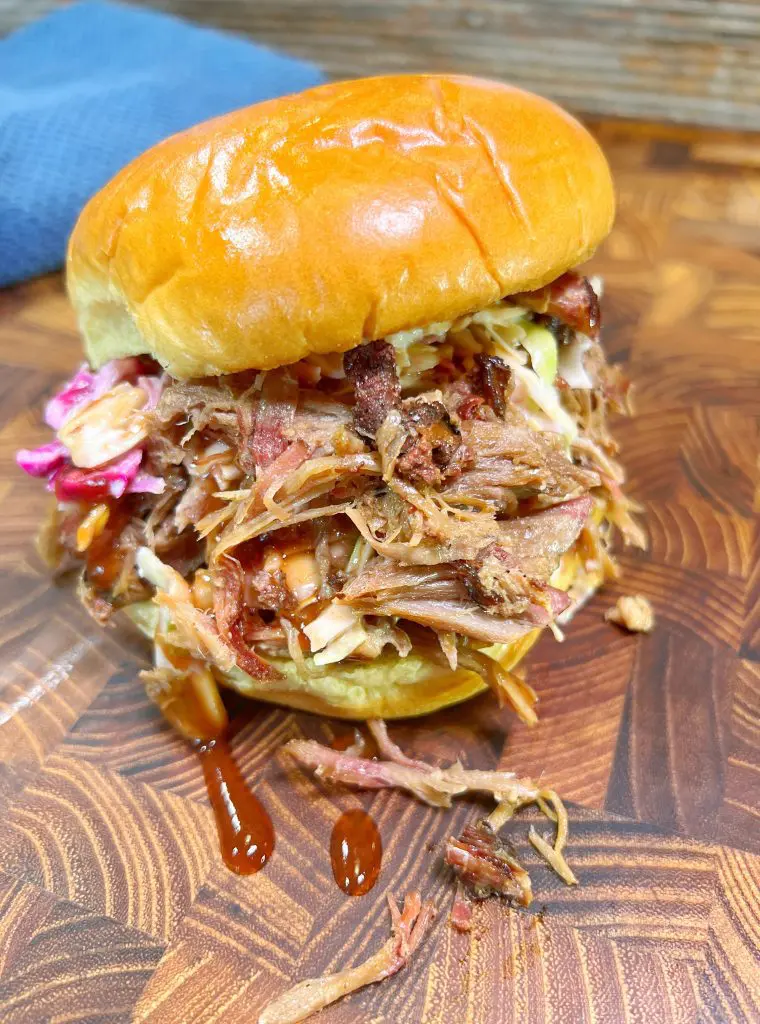
It doesn’t matter whether you’re a fan of the classic pulled pork sandwich, brisket burnt ends, or all of the above and then some, let’s talk about 10 things that you need to know about these cuts and how to cook them to perfection, every single time.
1. Cuts of Meat: Pork Shoulder vs. Beef Brisket
Let’s start with the most important part of the conversation, the meat itself. Pig vs. Cow and the best way to cook them. Pork shoulder (also known as Boston butt or pork butt) comes from the upper part of the pig’s shoulder. It has tons of intramuscular fat and connective tissue, this is why it’s perfect for slow cooking, overtime the fat breaks down and creates juicy meat when it hits the proper internal temperature. Beef brisket comes from the lower chest of the cow. Imagine the if the cow were a person, it’d be the muscle that goes over our shoulder.
Hawaiian Punch Pulled Pork Recipe!
Brisket is a tough cut of beef primarily because it gets so much use on the cow. This is what the cow uses to stand up when it’s laying down. The brisket also has tons of fat and intramuscular connective tissue, but it’s from a well-exercised area of the animal, so that means it needs lots of time and smoke to become tender.

2. Low and Slow Cooking is Non-Negotiable (for BBQ anyway)
It doesn’t matter if you’re cooking pork shoulder vs. beef brisket, remember that low and slow is the only way to go to get tender smokey meat. Both pieces of meat need lots time to break down their connective tissues to become tender. For pork shoulder, I aim for a smoker temperature of about 250°F, this is super easy if you’re using a pellet or automatic smoker, set it and forget it.
If you’re cooking more traditionally on an offset smoker this will vary some, and likely fluctuate between 225F – 275F. You’ll want to cook this until the internal temperature reaches about 200F inside the deepest part of the meat as read by a meat thermometer. Similarly for brisket, 250F on the smoker, and I’ll be checking for doneness starting around 200F – but it’s usually not done then, that’s the point where you switch over from time and temp, to feel of the brisket.

3. The Importance of Resting
I cannot stress this enough. If there’s one thing to take away from this article, it’s the importance of resting your meat after it cooks. It doesn’t matter if it’s brisket vs. pork, you can cook the meat perfectly and make the best brisket or best pulled pork possible, however if you don’t rest it, the meat will end up being tough and dry. After hours and hours of cooking, resting the meat lets the juices redistribute back into the meat away from the surface.
Cutting the meat too soon will mean that all of the delicious juices for your meat will spill on the cutting board instead of your taste buds. For pork shoulder, I let it rest for at least 2 hours before shredding it with forks. For brisket, I give it a solid 2-4 hours wrapped in an aluminum pan or butcher paper. The max you really want to rest meat is about 4 hours, but it’s important to note that you don’t want either cut of meat to drop down below 145F as this will enter the meat into the “danger zone” for bacteria growth.

4. Smoking Process: What Woods to Use
Aside from the dry rub that you pick up from the grocery store being used on the meat, smoke is your biggest flavor component. With pork shoulder I love using fruit woods like apple or cherry. They add a mild, sweet smoke that complements the rich flavor of pork shoulder.
When I’m smoking a whole brisket, I prefer woods that are stronger in flavor like oak or mesquite, sometimes I’ll mix the both while I’m cooking depending on what I have on hand. These woods give the brisket that deep, bold smoke flavor that makes it so iconic. If you’re trying out a new smoker for the first time or just starting out, you’re in the right place—experimenting with woods is part of the fun!
The Perfect Rubs for both Pulled Pork and Brisket (discount link)
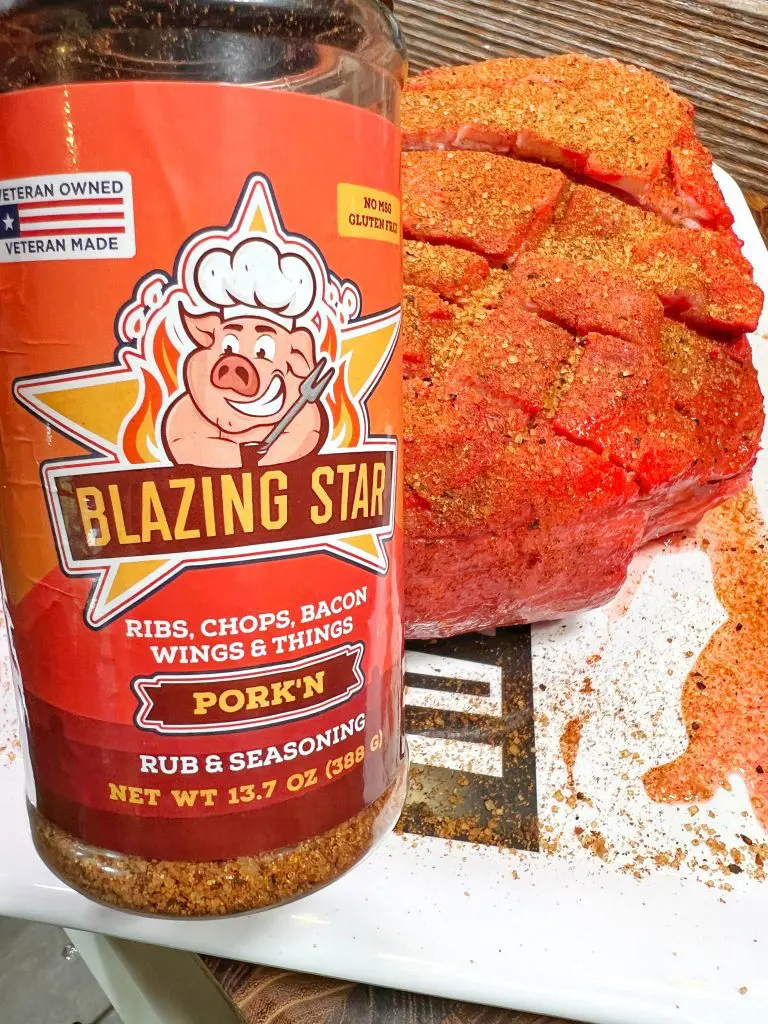
5. Sauce or No Sauce?
Whether you’re cooking pork vs. brisket, there’s a bit of a debate on sauce. To be clear, if you want to use your favorite barbecue sauces on your meat, do it. It’s your food, eat it as it makes you happy. Pulled pork often gets mixed with a favorite barbecue sauce after shredding, and I love a vinegar-based sauce for my pork. It cuts through the fattiness and gives it a nice tang. Brisket, however, typically doesn’t need much sauce.
A good brisket should stand on its own, especially if you’ve built a great bark with a dry rub. If you serve a sauce with brisket, keep it on the side – as each person’s tastes are different. However my favorite bbq sauce to have on a brisket sandwich is a tangy and deep flavored sauce like an espresso based bbq sauce.

6. Slicing vs. Shredding
We need to also talk about the main differences about how to serve brisket vs. pulled pork. Pork as described is pulled or shredded after the meat cooks and is rested. Most popularly served on a sandwich piled high with your choice of toppings like pickles, onions, or coleslaw.
Brisket, on the other hand, is sliced. The best cut of brisket has a nice smoke ring and slices beautifully against the grain. Whether you’re serving brisket for a large family gathering or just for a weeknight dinner, slicing it properly makes all the difference
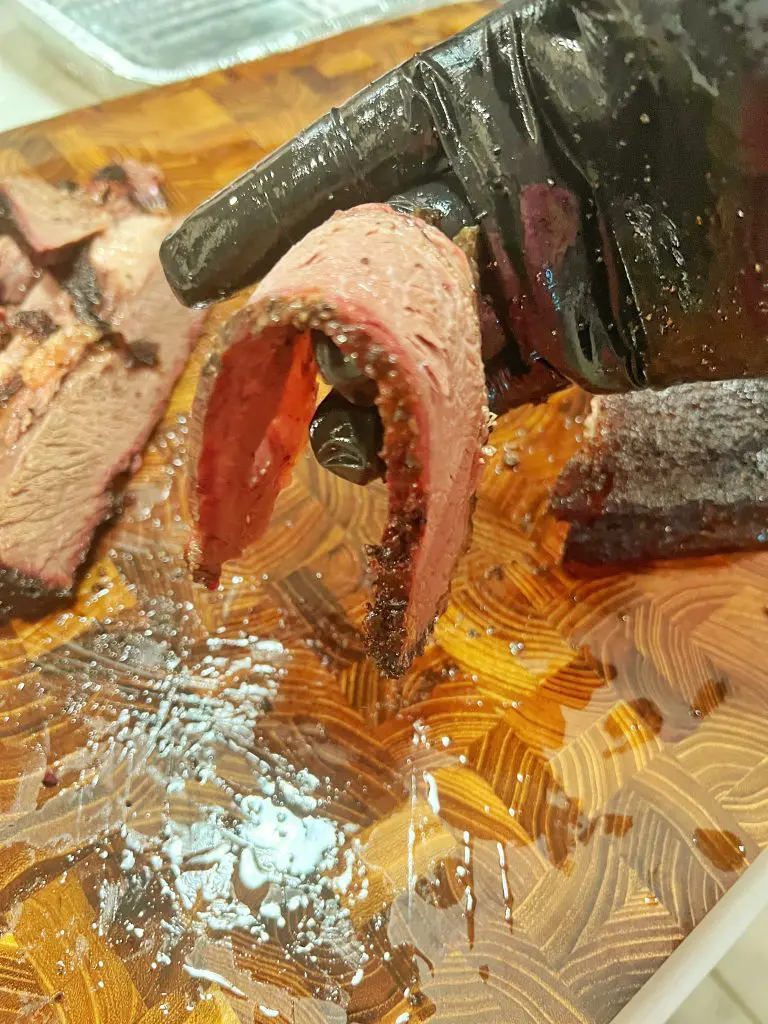
Check out my brisket video on Instagram
7. Easiest to Cook?
Pulled Pork vs. Brisket head-to-head
Between pulled pork vs. brisket, pork shoulder is definitely more forgiving. Because it has a higher fat content, it’s harder to dry out, even if you slightly overcook it. Brisket, on the other hand, can be a bit tricky.
In the battle for BBQ dominance, hands down pork shoulder is considerably more forgiving than brisket. In fact, it’s so forgiving that it’s often times recommended as the first thing to cook whenever you get a new smoker to help you get the feel for it. Brisket, on the other hand is very easy to dry out if you’re not careful with the cooking process.
That’s why many pitmasters say brisket is the true test of a BBQ cook’s skill. Whether you’re a first-timer or a seasoned pro, brisket demands attention and care.
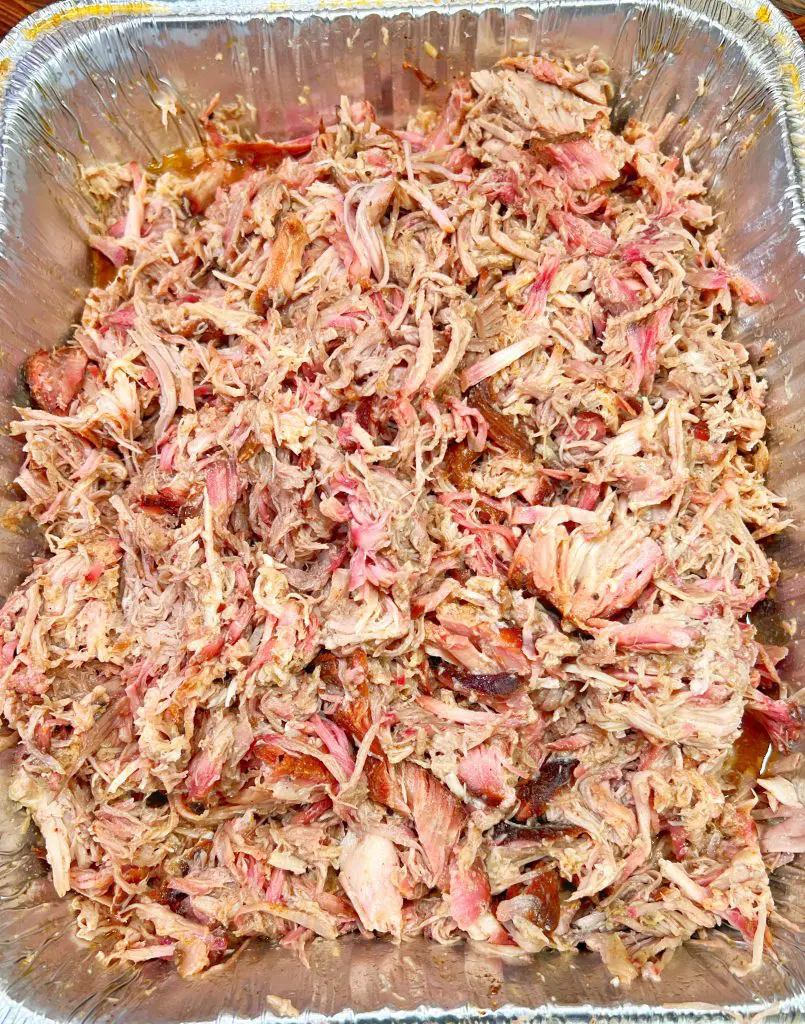
Check out my Hawaiian Punch Pulled Pork Recipe
8. Different Animals, Different Flavors
It’s been implied dozens of times already in this article, however we need to call out that the biggest difference here are that they come from different animals, so they will absolutely taste different, and aren’t often times a substitute for one or the other because of the time and skill required to cook a brisket vs. pork shoulder. Pork has a naturally sweeter flavor that pairs well with most sweeter rubs that you can find in grocery stores. Brisket is more of an intense flavor that is perfectly paired with salt, pepper, and garlic powder.
9. Burnt Ends: The Best of Both Worlds?
If you know BBQ and burnt ends specifically, you know that they come from the ultra flavorful and fatty rich point end of the brisket.. They’re a BBQ lover’s dream. But did you know that you can also make burnt ends with pork belly? Pork belly burnt ends are incredibly tender, with that same sticky, smoky flavor you love in brisket burnt ends. It’s like getting the best of both worlds when you’re torn between pork brisket and beef brisket.
Pulled Pork Waffle Fries recipe – perfect for brisket too!
10. Where to Find the Best Cuts
In the United States, it’s generally not difficult to find these cuts of meat. there’s a really good chance that your local grocery stores have what you need. If you have a local butcher, I always recommend checking them out first. They can provide guidance and advice on the best size and cut of meat for you. Additionally a good butcher / meat market is going to have other things that you need like kitchen twine and classic sides like pasta, or potato salads for example.

The Perfect Rubs for both Pulled Pork and Brisket (discount link)

